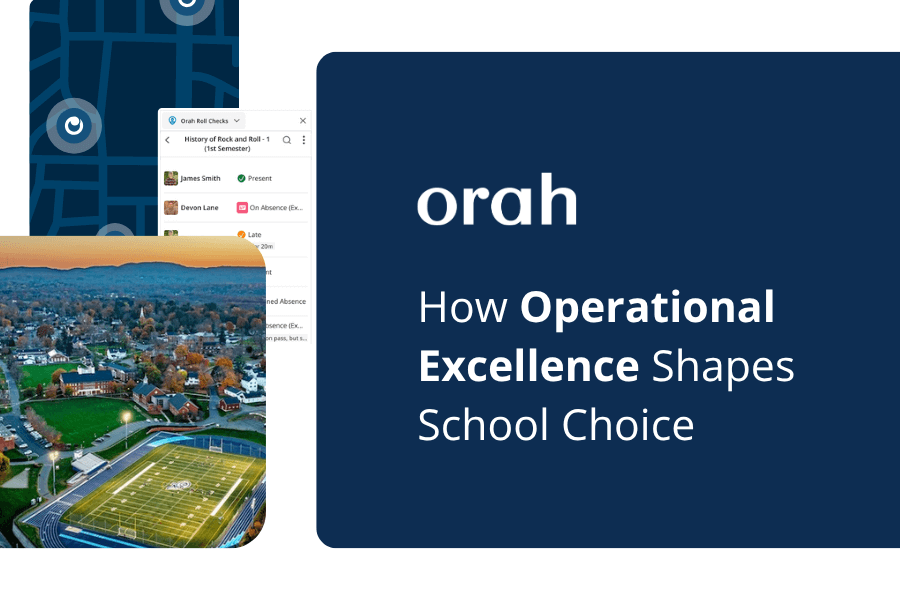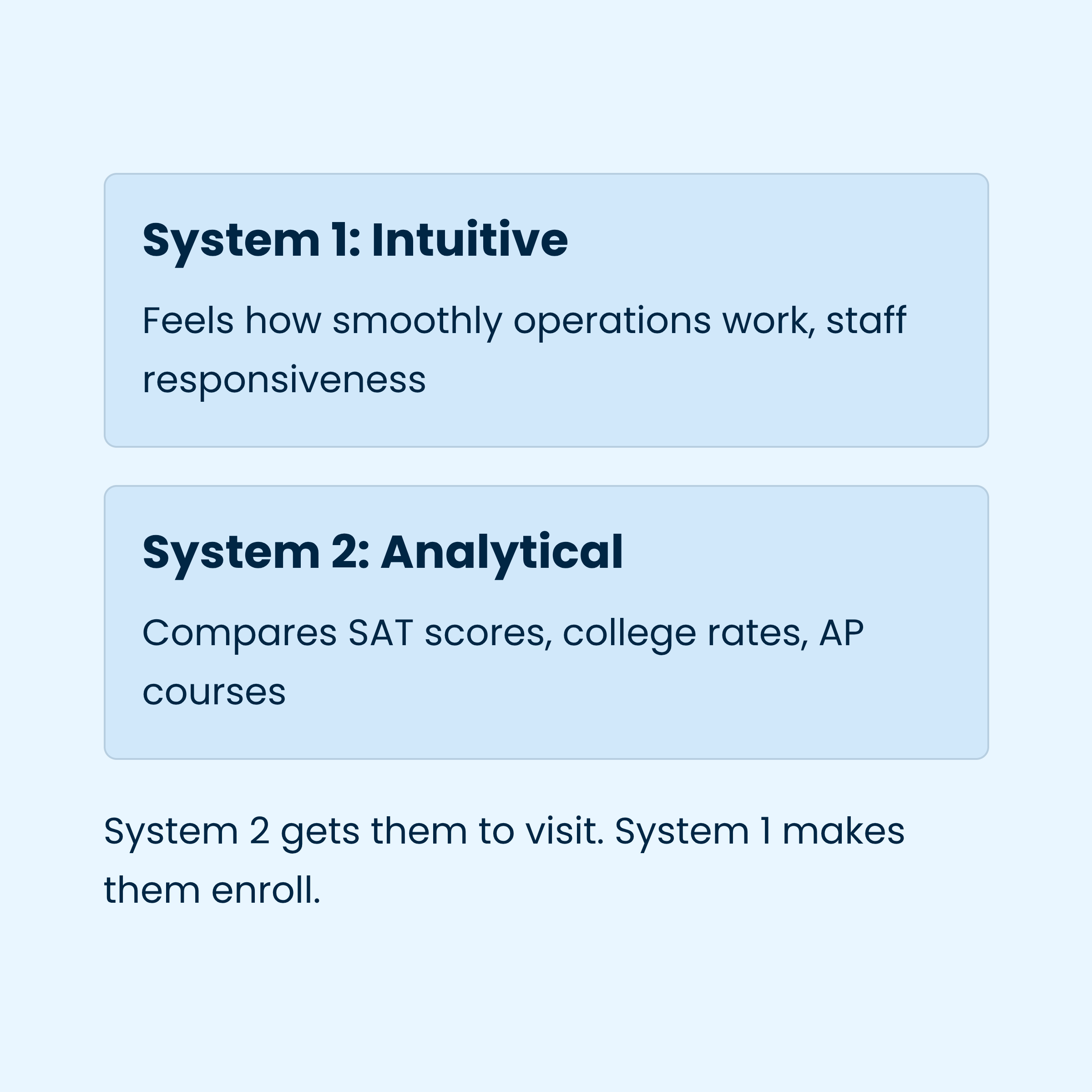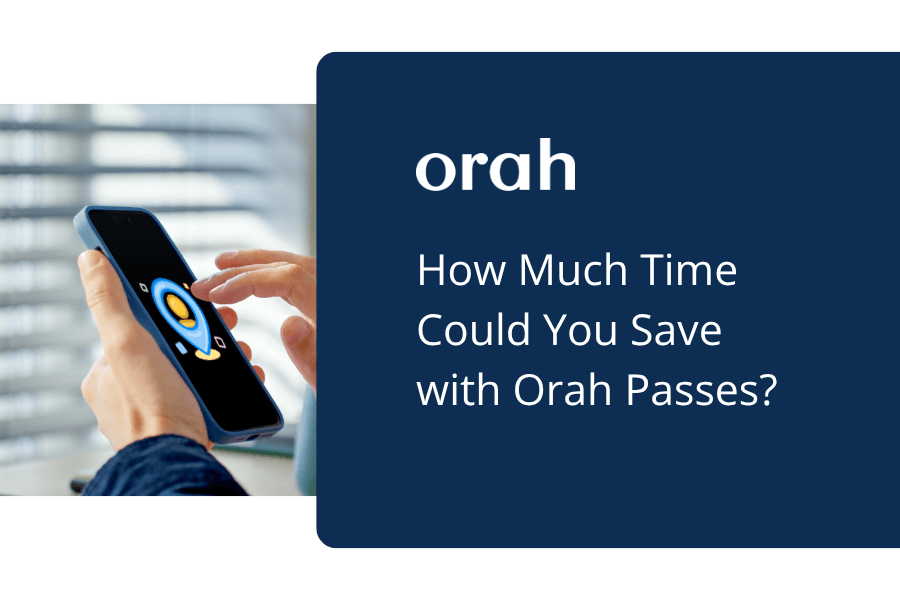How Operational Excellence Shapes School Choice
Tiago Penteado
•
October 15, 2025

The top independent schools in America share more than academic excellence. According to Niche's 2026 school rankings, America's best schools are: The Hotchkiss School (#1), Phillips Exeter Academy (#2) and North Carolina School of Science and Mathematics (#3). We are proud to reveal that each of them use Orah in their daily operations, and have solved a problem many schools still struggle with: knowing where students are.
When parents tour your school, they're not just evaluating your academic program. They're watching how you respond when a student forgets their laptop charger. They're noticing whether the front desk staff knows where students are. They're forming impressions based on dozens of small interactions that signal whether your school has its act together.
These impressions matter more than you might think.
The Two Systems of Decision-Making
Nobel laureate Daniel Kahneman's research in Thinking, Fast and Slow reveals that humans make decisions through two distinct systems:
System 2 is deliberate and analytical. It's the part of a parent's brain that compares your school's SAT scores, college matriculation rates, Niche.com reviews and AP course offerings against competitors.
System 1 is fast, intuitive and emotionally driven. It's the gut feeling that forms when a parent observes how smoothly your school operates—whether systems work, whether reviews are positive, whether staff are responsive, whether the environment feels organized and safe.
When parents choose between comparable elite schools, System 2 gets them to your admissions office. But System 1 makes the final decision.

What System 1 Notices
System 1 picks up on operational details that parents might not consciously articulate:
- A parent submits a leave request online and receives immediate confirmation. System 1 registers: This place works smoothly.
- A student checks out for a doctor's appointment without confusion or delay. System 1 concludes: They have their systems figured out.
- During an emergency drill, staff can account for every student within minutes. System 1 decides: My child will be safe here.
- The attendance office responds to a question about their child's absence before the parent even thinks to follow up. System 1 feels: They're on top of things.
These are the routine interactions that build intuitive confidence. The kind that creates a stellar experience (and leads to better reviews), which have a flow-on effect that go on to influence another family's final decision when choosing between otherwise similar schools.
The Cost of Operational Friction
Poor operational systems create friction that System 1 immediately flags as a problem:
- Parents submit forms and hear nothing back for days
- Staff members give conflicting answers about student whereabouts
- Simple requests require multiple emails or phone calls to resolve
- Emergency procedures feel improvised rather than rehearsed
Each point of friction plants a seed of doubt. Even if your academic program is exceptional, operational chaos makes parents wonder: If they can't manage student leave, what else are they struggling with?
How Top Schools Build Operational Confidence
The schools that consistently win enrollment decisions—like those at the top of the 2026 Niche rankings—have mastered operational excellence. They've built systems that create seamless, friction-free interactions:
Real-time visibility: Staff can answer "Where is this student?" in seconds, not minutes. Parents don't wonder whether their child made it to the nurse's office or the sports field. Phillips Exeter Academy, ranked #2 in the nation, uses Orah to maintain this level of visibility across their 600-acre campus with over 1,100 students.
Instant confirmation: When parents or students submit requests—leave requests, dismissal changes, permission forms—they receive immediate acknowledgment that the request was received and processed. No more wondering if the email went through or if someone saw the note.
Consistent communication: Everyone gets the same answer because everyone is looking at the same information. The front desk, teachers, deans, and parents all see the same real-time student location data.
Emergency readiness: During drills or real emergencies, the school can account for every student quickly because location records are already accurate and up to date. There's no scrambling to collect paper sign-out sheets from around campus.
These capabilities don't just make operations smoother. They create the intuitive confidence that influences school choice.
Why This Matters Now
Independent school admissions have never been more competitive. Families have options, and they're evaluating schools with unprecedented scrutiny. Niche's 2026 rankings analyzed data from over 30,000 private schools nationwide, combining three million reviews from students, parents, and teachers with quantitative metrics like graduation rates and college readiness.
When academic programs are comparable, operational excellence becomes the differentiator.
Schools that invest in operational systems aren't just reducing administrative burden (though they're doing that too). They're building the seamless experiences that shape how families perceive their competence, organization, and commitment to student safety.
The top-ranked schools understand this. They've moved beyond antiquated paper-based sign-out sheets and fragmented systems that scatter location data across multiple platforms. Instead, they've implemented integrated solutions that make it easy to know where students are at all times.
Your Admissions Strategy in Action
Parents choose schools where they feel confident their child will be safe, supported, and well cared for. That confidence doesn't come from marketing materials or admissions pitches. It comes from observing how your school operates when they're not trying to impress anyone.
Every time your systems work smoothly—when a parent gets immediate confirmation of a leave request, when staff can account for student locations without scrambling, when communication is clear and consistent—you're building the intuitive trust that influences the final enrollment decision.
Operational excellence isn't a back-office concern. It's your admissions strategy in action.
Want to see how top independent schools maintain real-time visibility into student location without the administrative burden? Schedule a demo to learn how Orah helps schools know where their students are.
Download your guide to knowing where students are
When you sign up, we'll send you a guide detailing what it takes to setup your daily operations to maintain student location awareness using your routine school processes like attendance, student leave, late arrivals, early dismissals & emergencies. You'll also recieve an invite to join the Orah community and get the quarterly newsletter.













